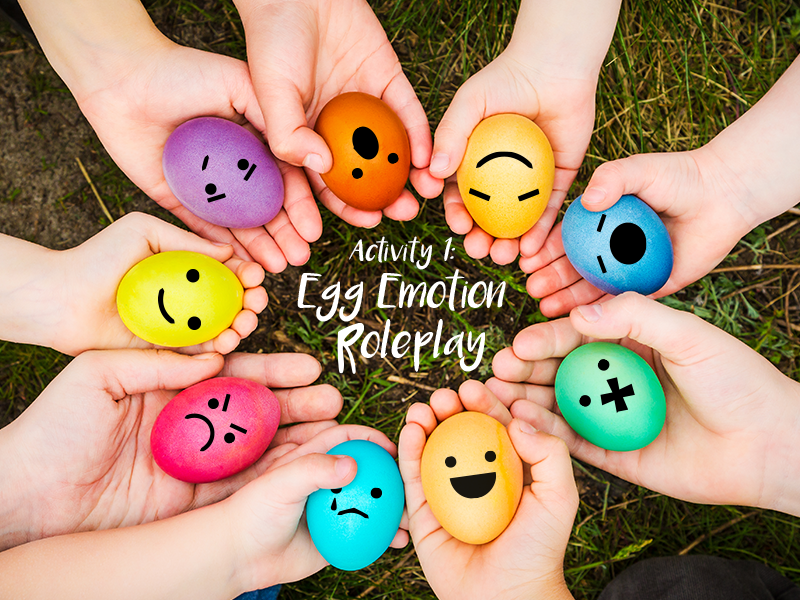Teach your students simple yoga poses to help them get control of their bodies when emotions are running high. National Center on Quality Teaching and Learning.
 10 Activities To Help Students Explore Emotions Apperson
10 Activities To Help Students Explore Emotions Apperson
However new research has shown that being involved in the arts is also beneficial for social and emotional development.

Activities to support social and emotional development. Include things such as strategy cards squeeze balls calm-down bottles putty and breathing exercises. Arrange play areas so more than two children can play together or side by side. Your classroom routinesfrom greetings to art activities to storytimeare packed with opportunities to strengthen the social-emotional development of every young child you teach.
Creating a self-collage can help kids develop better self-awareness about who they are. Painting and drawing can serve as positive coping strategies to manage stress. 1 Giving Children Responsibilities 2 Following Childrens Lead 3 Fostering Connections 4 Being Aware of Childrens Needs 5 Creating a Caring Community.
Here are 25 simple ways you can support social-emotional learning for your students every day. Make friends and keep friendships Gain confidence Resolve conflicts Manage stress and anxiety Learn social norms Make appropriate decisions Resist negative social pressure Learn strengths and weaknesses Gain awareness of what others are feeling. Put together a box or trunk of dress-up clothes collect hand puppets and provide a range of props to stimulate your childs imagination during role-play.
Partner Art Trade- Making something for someone else is a great way to encourage students to think about others. Social-Emotional Learning Activities for Toddlers. Cover your face with your palms.
Art-related activities are fun for young children and are a good way to encourage creativity and assist with the development of fine motor skills and spatial awareness. Recognizing and naming different types of emotions as well as empathy. It ensures that the school setting attends to the social and emotional development of children as well as their cognitive development Creating routines of fun and meaningful activities such as songs chants and games can minimize problems or stress during challenging times such as when children wait in line or during transitions.
Here are a handful of social-emotional learning activities that can help your child manage emotions and work on social skills and have some fun with you along the way. Encouraging your child to get involved in role-play helps boost social and emotional development because it requires both verbal and nonverbal communication. The social-emotional skills eventually help a child develop relationships with friends and family learn to work with others convey feelings and respond to the feelings of others.
Remove your hands from your face and make a face that expresses an emotion. If you are having emotions in front of your childthat is ok. Start the day with a check-in.
Children learn and retain information through play so it is one of the BEST ways to teach a new social skill. These Personal Social and Emotional Development activities include PowerPoints worksheets role-play masks circle time games colouring sheets prompt cards discussion cards word mats display posters adult input plans page borders and more. Stock a plastic bin with tools to help little ones manage their emotions.
Happiness sadness confusion worry anger. Skills like recognizing and managing emotions being a good friend controlling impulses communicating effectively and working with others are invaluable. Read books about friends cooperation helping each other emotions and empathy.
Creating art that engages and strengthens your social and emotional muscles is a great way to make connections between feelings and creativity. Art can be a powerful way to target social and emotional skills. Supporting childrens socialemotional development at an early age builds a solid foundation for their future preparing children to successfully manage their emotions and behaviors establish caring relationships with others follow limits and expectations and interact in groups.
Encourage your child to mimic the emotions you are making. Social-emotional skills help kids. And all are designed to fit easily into daily routines.
Engaging with different materials like dirt sand and slime just to name a few give your child a chance to strengthen their sensory processing skills and nervous systems. 15 Art Lesson Ideas to Support SEL. Take a minute and explain to your child why you are happy sad or mad.
Include plenty of toys and materials that promote social interactions eg dress-up clothes blocks balls puppets cars trucks and board games. Social-emotional development represents the childs experience expression and management of emotions and the ability to establish positive and rewarding relationships with others. Studies show that children who learn socialemotional skills at.
These social-emotional learning games are very low-tech. Messy play is important for your childs social and emotional skills as it helps to develop self-control and emotional regulation. Materials for Social Emotional Support.
Teach them yoga poses Source. Social-emotional skills concepts.